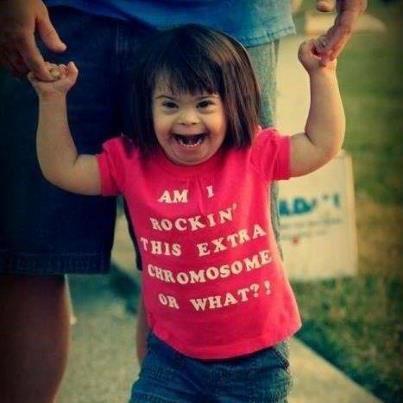This article by Kliewer discusses the fundamentals of how the special education systems works in most American schools today, but also looks at a few teachers who use a very different model, Shayne's work with children with down syndrome in particular.
In this 'citizenship' model of special education, Shayne uses the strengths of each student, to develop lessons that appeal to them, and teach them the critical thinking skills they need to become productive members of society. This is an integration model, in which students with special needs aren't segregated, but rather integrated into the classroom, and valued for what they contribute to the class, while learning from what others have to contribute.
I always used to think that my high school had a pretty decent special education program (separate room for special ed, not inclusion) that was progressive and really helped students in the program grow and succeed. And in some ways it was, there was a program that placed the students in a bunch of different employment opportunities and allowed them to experiment with what they liked. It also taught them general skills, a big one was that they went out and did all the shopping for the culinary classes. This provided them not only the skills with how to grocery shop and participate in society, but also provided them the opportunity to participate within the school. I always felt that the student body was very inclusive of the special education population. But then I had the opportunity to do a practicum in my old high school and saw a different side of things. Most people in the school are very kind, polite and inclusive, but a few of the aids in the special ed class routinely talked down to the students, and didn't provide meaningful opportunities. It was heartbreaking to see. While the students in the program weren't looked down on by those in general population, by not having an inclusion program, they were set apart and not provided the opportunities that the children in Shayne's class in the article were. Reading this article was so enlightening to me, to read what true inclusion (what they refer to as citizenship in the school community) and positive teaching can do for students, both special ed and non.
Edit: (Add Connection)
In the Kliewer article on down syndrome, I saw a lot of resonance with Jeannie Oakes discussing tracking. Although their subject matter is different, they are both discussing inclusion. Together they believe in mixing students of different abilities and socio-economic status together in the classroom, allowing each to learn from, and teach each other new skills, with all participants reaping the benefits.



your blog post made me think back to an expierence I had in Highschool; My highschool also had a seperate classroom for the kids with disabilities, it was seperated from the rest of the school, I did a program called lunch buddies where I would eat lunch with the disabled students and I also noticed the teacher would talk down to them she also once yelled at me for talking to them to much and it distracted them from eating
ReplyDeleteSame situation happened with me! A child with special needs got pulled away from my friends and I and was told he couldn't sit with us at lunch anymore.
DeleteI agree with you, Lincoln High School did have a good special education program. A lot of the students that were placed in that class developed so much! I remember participating in Best Buddies where we were partnered up with a student with special needs and learned a lot from them. It was such an awesome experience. Great post!
ReplyDelete